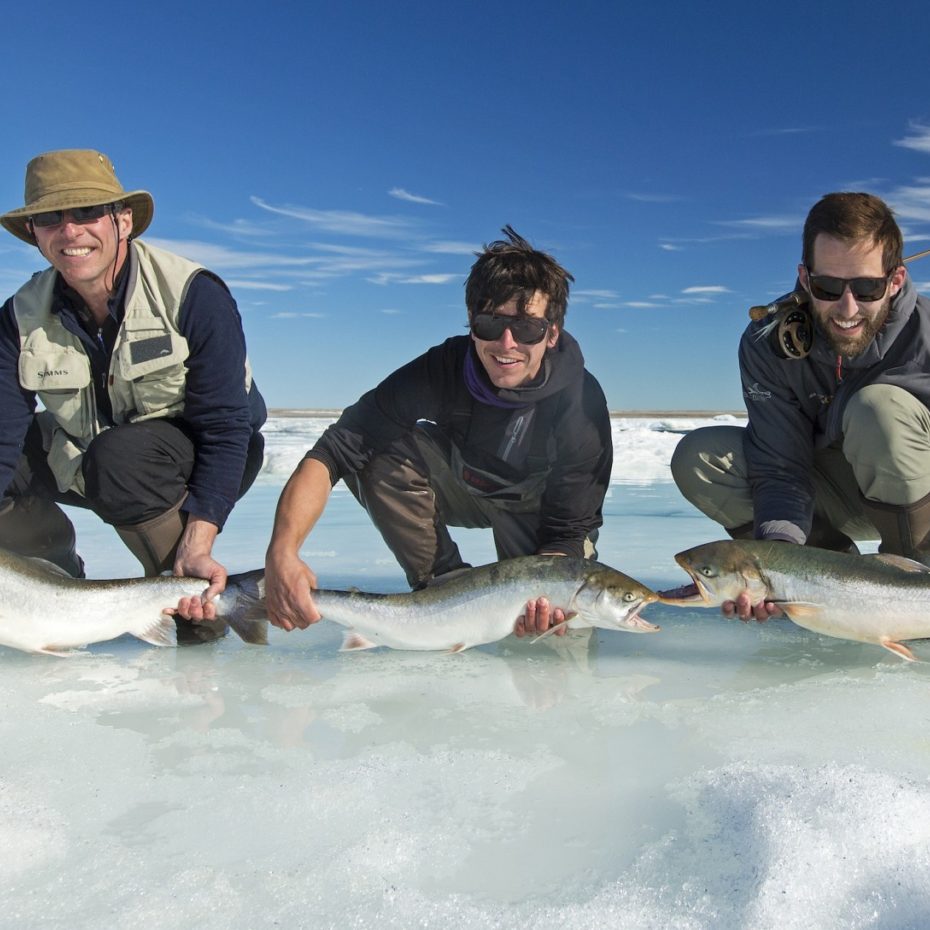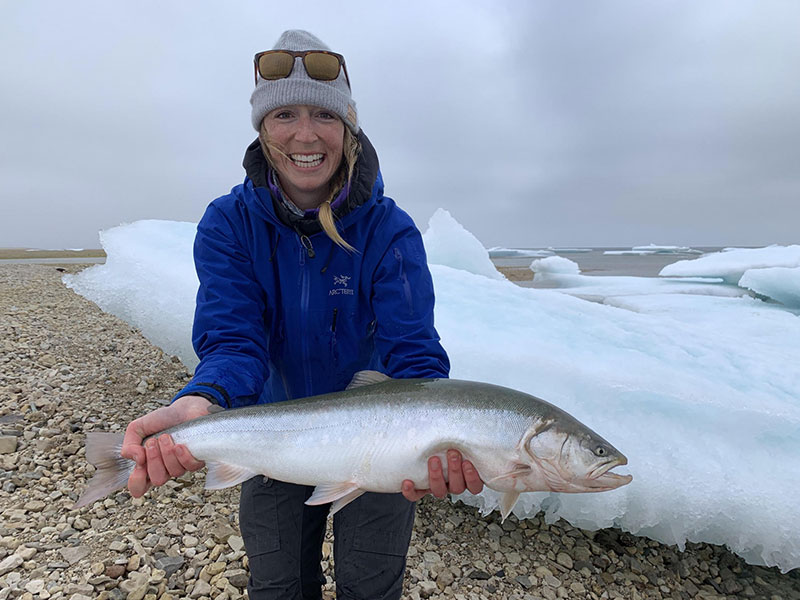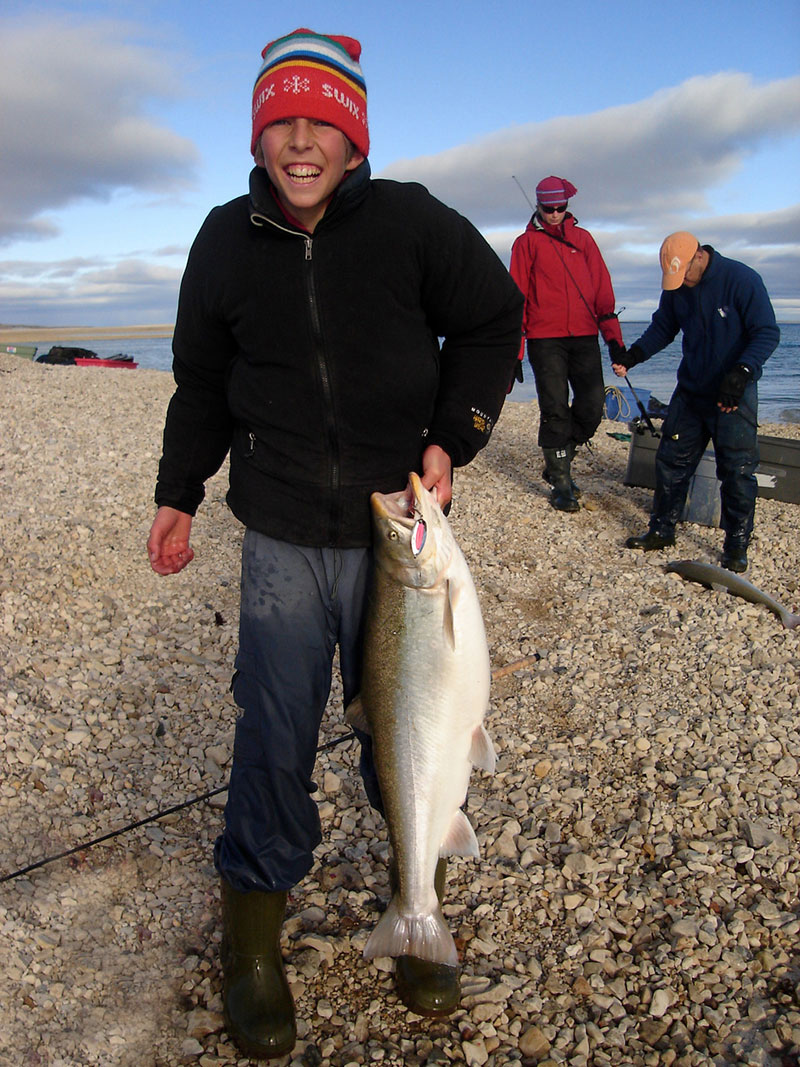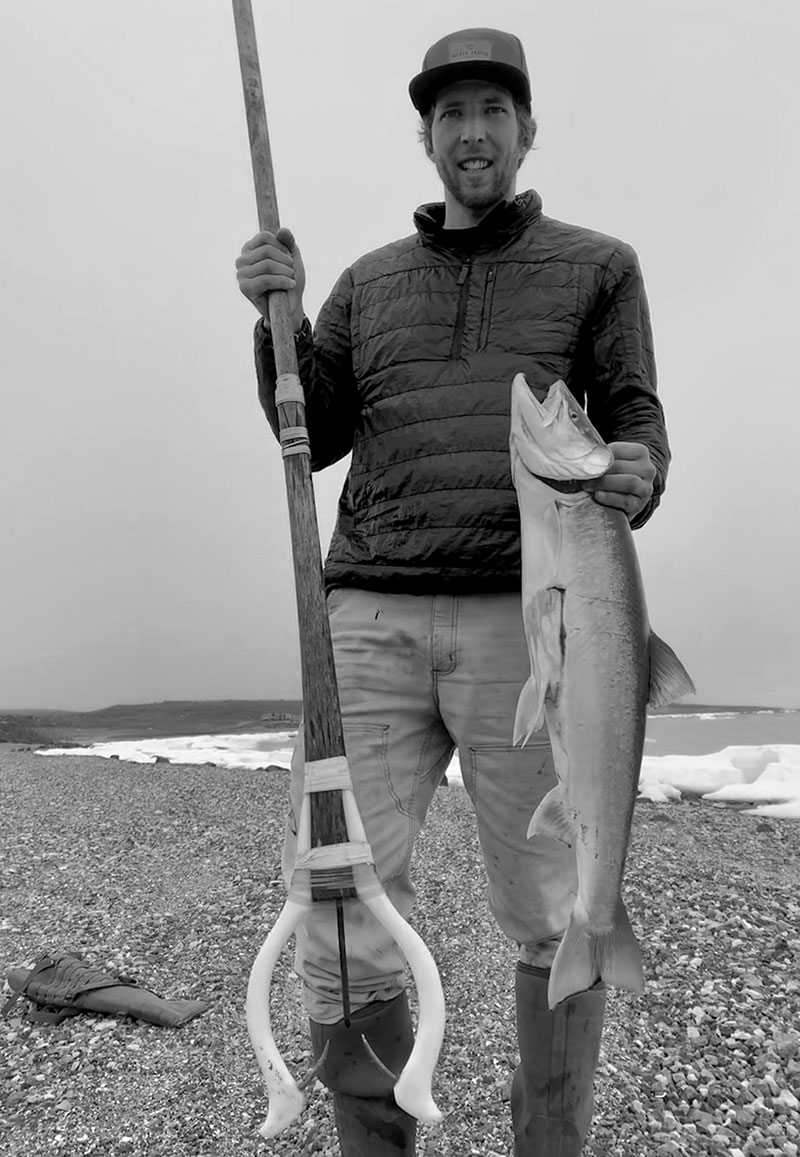FISHING FOR ARCTIC CHAR
Featured

Featured
January 03, 2020 | Arctic Watch
Arctic Char: hard fighting, great tasting, and beautiful, learn all about them!
Arctic Char or “Tariungmiutaq” in inuktitut (the language of Nunavut’s indigenous people) have the most northern range of any other freshwater fish in the world. They are found in the lakes, rivers, and oceans of all of the circumpolar countries.

Arctic Char belong to the Salmonidae family and the Salvelinus genus. In this genus, their closest relatives are Lake trout (found in large quantities at Arctic Haven), Bull Trout, Brook trout and Dolly Varden. An even closer look at their family tree takes us to not long ago when small populations of Arctic Char were caught in the pools left by melting glaciers from the last ice age. These Arctic Char populations that stayed in the small pools now live there and don’t voyage to the ocean. This isolation morphed the char that were left behind into a separate subspecies that are called “Landlocked Arctic Char”, while their close relatives that migrated to the ocean are called “Sea-run Arctic Char”. Here at Arctic Watch, we are lucky enough to have the opportunity to catch both subspecies. We catch Landlocked Char at Inukshuk Lake (30 kilometre ATV ride from the lodge), and an optional addition to your Arctic Watch adventure can take you to Creswell Bay where the true prize of big sea-run char is common.
Sea-run Arctic Char spend most of the year in the river that they were born in, as the Arctic Ocean is too cold to over winter in. They return to the Ocean in the spring and spend the summer there to bulk up on the many food sources that it provides. Their diet consists of other fish such as Arctic Cod and Sculpin and small Amphipods. In the fall, Sea-run Arctic Char return to the river to spawn. First to arrive are the males in order to establish their territories and prepare for the arrival of the females. Soon, the females arrive and the eggs are laid, then fertilized, where they will remain until hatching in the spring.

Little Nansen hoisting a big char
Sea-run Arctic Char are prized among fly fisherman as beautiful, hard fighting specimens that are found in some of the most beautiful settings the world has to offer. Known for their chrome shine while in the ocean and bright orange while in the rivers, you would be hard struck to find a prettier target to cast a fly to. Spending most of their life in the frigid waters of the Arctic, Arctic Char grow at a very slow rate; However, due to their long life span of 20-24 years, Arctic Char can grow to well over 20 lbs!
Bright coloured streamers or spoons are the weapon of choice while fishing for these beasts at Creswell Bay. If you can handle the sheer force of these chrome bullets, there is nothing stopping you from catching over 50 in a day.
Landlocked Arctic Char lack the nutrients that their Sea-run counter parts get in the Ocean, therefore, don’t grow as large. Like Sea-run Arctic Char, these lake dwellers spawn in the fall, but instead of going to the ocean, they seek out gravel bars or streams that enter the lake.
Fishing for Landlocked Arctic Char is a much more delicate game than what is done at Creswell Bay. We focus in on the insects that the char are eating. “Match the hatch” as the expression goes is the most effective way to catch them. These small Arctic lakes host caddis, chironomids, mayflies and mosquitoes, all a good snack for these char. The suggested fly patterns to match these respectively are: Goddards Caddis, Black Gnat, Royal Wulf, and just any old mosquito pattern. For spin fishing, spinners are very effective.

The Inuit hail the Arctic Char as a great tasting protein source that they have perfected catching over thousands of years. Traditional methods used by the inuit include using the ingenious tool that they made called the harpoon. Harpoons are spears that are attached to a second piece of wood by the sinew (tissue connecting muscle to bone) of other animals. This allows them to launch the spear and pull it back without losing it.
You can catch Arctic char for yourself at our own Arctic Watch Wilderness Lodge.
Written by: Donny Boake
We understand that booking a trip like this is a big endeavour. Please reach out to us with any questions that you might have regarding your upcoming adventure.